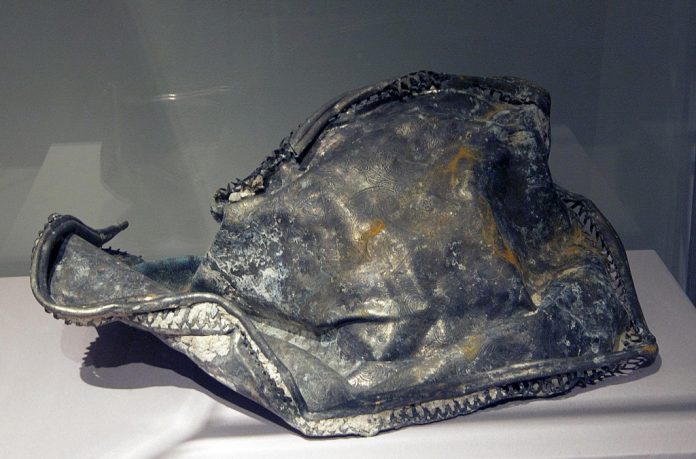An incinerated and twisted computer keyboard. A melted and misshapen metal tray. They’re part of a museum exhibit of ordinary items that became extraordinary in the rubble of Sept. 11, 2001.
Pieces of lost lives.
To commemorate the 10th anniversary of the Sept. 11 attacks, the University of Pennsylvania has put together an exhibit of items recovered from the rubble of the World Trade Center in New York.
In Excavating Ground Zero: Fragments from 9/11 at the Penn Museum of Archaeology and Anthropology, you can find some of the ordinary accouterments of life transformed by the events of a day so many of us still find difficult to describe.
The World Trade Center’s twin towers were tourist attractions and office buildings, and like so many such structures, they were filled with people who worked at computers on their desks.
One of the 15 WTC artifacts on display at the museum through Nov. 6 is a computer keyboard — one mangled and melted in the tragedy that claimed more than 2,600 lives and transformed the last 10 years of our history.
There are other relics: a stairwell sign, dictionary pages, a visitor’s badge, a broken pair of glasses, a twisted loudspeaker and Christmas ornaments.
They are everyday items from a moment in time when “everyday” was so much different than “everyday” 10 years later.
Consider how life has changed during the past decade. There are no-fly lists for air travel, information is shared between government jurisdictions, and even getting into a public building requires passing through metal detectors.
All the objects in the exhibit were collected by the National September 11 Memorial & Museum, which will open on the site of the World Trade Center on Sept. 11, 2012, said Kate Quinn, the designer of Penn’s exhibit.
“They tell the story of that time,” she said, wondering how the items will be viewed decades from now by people who might not understand what they are.
Various 911 objects bound for the New York museum are on display at nine sites around the world, Quinn said. They were collected by anthropologists at the WTC site and turned over to New York police, who tried to return them to their rightful owners or their families, Quinn said. The items in the exhibit have not been traced to any one person, she added.
“Every effort was made to get things back,” she said.
A computer keyboard is, and was, a common object. The one on display at Penn is so contorted that some people can’t recognize it immediately, Quinn said.
“Then, they begin to make out the keys on the left-hand side,” she said.
Quinn was amazed that some of the other items were in such good shape. Dictionary pages, for example, survived the plane crash, explosion, fire and eventual building collapse.
Quinn said she had worked on the exhibit for several months before the items arrived for display. Before that, she was cataloging and working on the exhibit’s slide show, looking at images from the day now regarded as the nation’s darkest.
“I was sitting at my desk, just crying,” she said. “For me, when the objects came in, they were so much more powerful.”
In the museum, there is a blank wall on which visitors can write their comments and share their memories of 9/11.
Quinn said two people who worked at the World Trade Center wrote on the wall. One, she said, had gone to work but got out early. Another, very luckily, had decided not to go in on Sept. 11, 2001.
Some university students who see the exhibit were very young in 2001, Quinn said.
“They don’t know what the world was like before.”
The museum is at 3260 South St., and admission will be free this Sunday, the anniversary date of the terror attacks. There will be lectures on the history of the twin towers, starting at 1 p.m., followed by a 3 p.m. reading of scenes from Cato, a 1713 play about the fall of the Roman republic to Caesar’s tyranny, as a catalyst for a panel discussion of the lasting impact of 9/11.
Another free-admission day is scheduled on Wednesday, Oct. 12. At 6 p.m. that day, a New York State Museum curator will talk about the nature of retrieving objects from the WTC site. ••
Reporter John Loftus can be reached at 215–354–3110 or [email protected]
Somber anniversary . . .
The Penn Museum of Archaeology and Anthropology is open Tuesdays and Thursdays through Sundays from 10 a.m. to 5 p.m., and on Wednesdays from 10 a.m. to 8 p.m. It is closed Mondays and holidays.
Admission is $10 for adults; $7 for senior citizens; $6 for children ages 6 to 17, and for full-time students with IDs; and free to members, PennCard holders and children 5 and younger. Admission is “pay what you want” during the last hour before closing.
For more information, call 215–898–4000. ••





